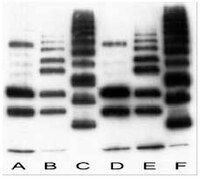ST1200 Sigma-AldrichAnti-Ubiquitin Mouse mAb (FK2)
This Anti-Ubiquitin Mouse mAb (FK2) is validated for use in ELISA, Immunoblotting, Immunoprecipitation, Immunofluorescence for the detection of Ubiquitin.
More>> This Anti-Ubiquitin Mouse mAb (FK2) is validated for use in ELISA, Immunoblotting, Immunoprecipitation, Immunofluorescence for the detection of Ubiquitin. Less<<Recommended Products
Overview
| Replacement Information |
|---|
Key Specifications Table
| Species Reactivity | Host | Antibody Type |
|---|---|---|
| A Broad Range Of Species | M | Monoclonal Antibody |
Products
| Catalog Number | Packaging | Qty/Pack | |
|---|---|---|---|
| ST1200-100UG | Glass bottle | 100 μg |
| Product Information | |
|---|---|
| Form | Liquid |
| Formulation | In PBS. |
| Preservative | ≤0.1% sodium azide |
| Quality Level | MQ100 |
| Physicochemical Information |
|---|
| Dimensions |
|---|
| Materials Information |
|---|
| Toxicological Information |
|---|
| Safety Information according to GHS |
|---|
| Safety Information |
|---|
| Product Usage Statements |
|---|
| Packaging Information |
|---|
| Transport Information |
|---|
| Supplemental Information |
|---|
| Specifications |
|---|
| Global Trade Item Number | |
|---|---|
| Catalog Number | GTIN |
| ST1200-100UG | 04055977224078 |
Documentation
Anti-Ubiquitin Mouse mAb (FK2) SDS
| Title |
|---|
Anti-Ubiquitin Mouse mAb (FK2) Certificates of Analysis
| Title | Lot Number |
|---|---|
| ST1200 |
References
| Reference overview |
|---|
| Matsumoto, M., et al. 2005. Proteomics 5, 4545. Boname, J.N., et al. 2001. Immunity 15, 627. Campbell, V., et al. 2001. Neuron 32, 1013. Fujimuro, M., et al. 2003. FEBS Letts. 349, 173. |








